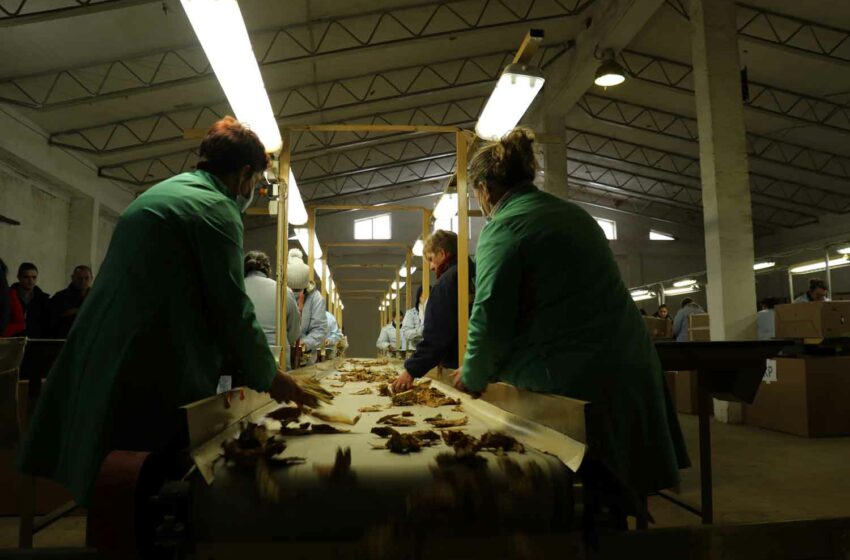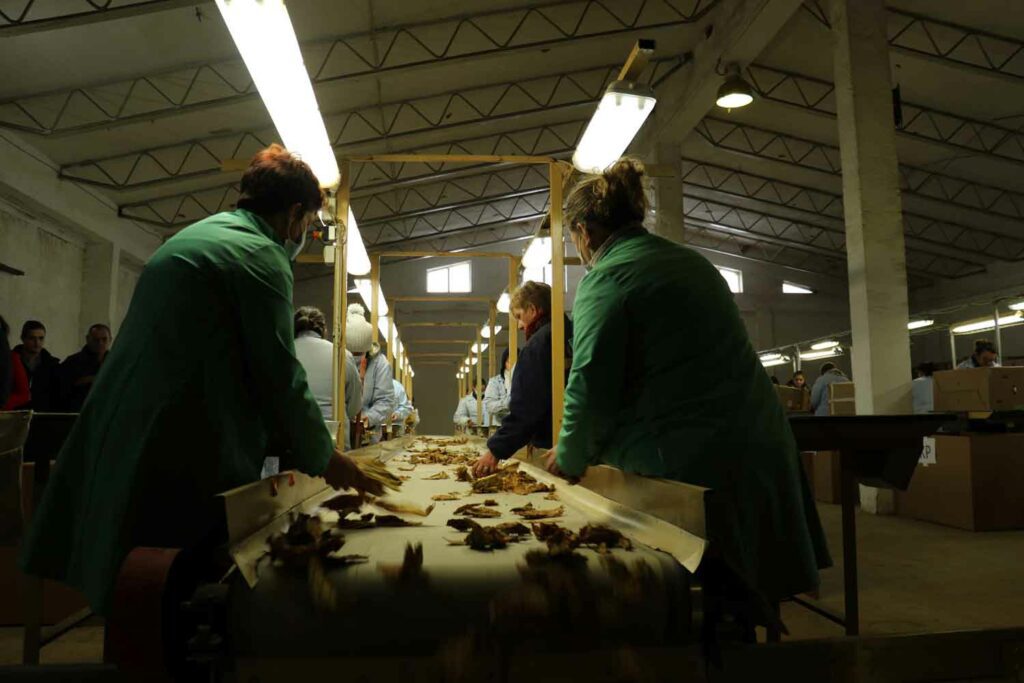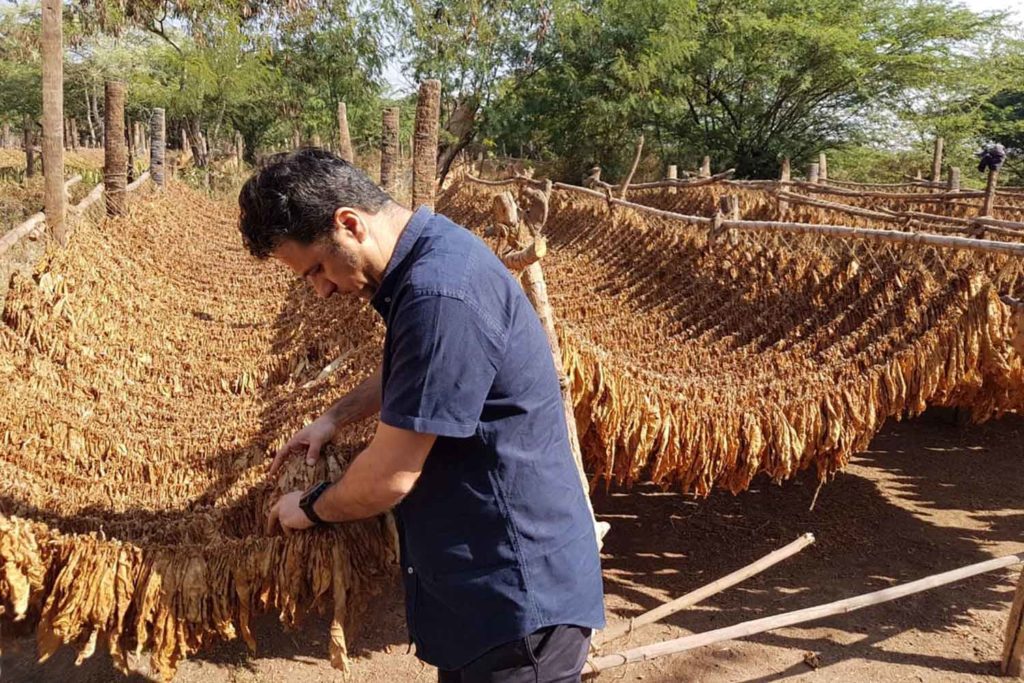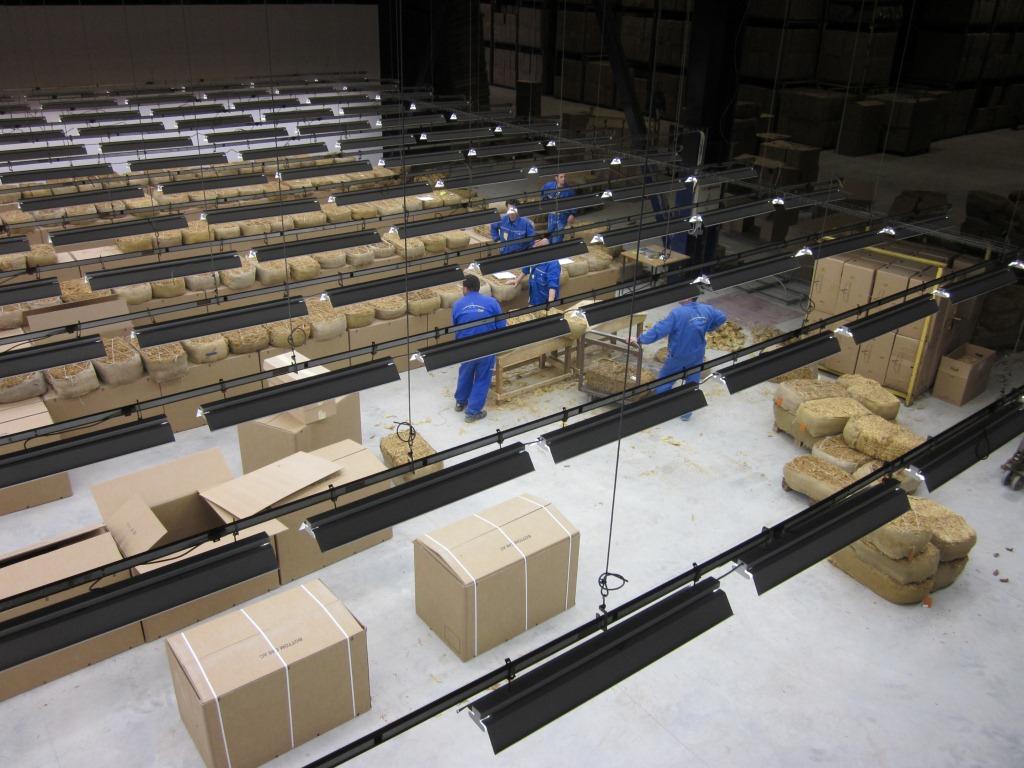Difficult Dynamics
- Also in TR Leaf Print Edition
- January 2, 2024
- 0
- 11 minutes read


The oriental leaf business struggles with adverse weather conditions and farmer attrition.
By Stefanie Rossel
“Complex” is probably the word that best describes the prevailing situation for classical oriental tobacco. In 2023, the sector again struggled with adverse weather conditions and farmer retention.
“A shared challenge faced by all countries in the current season is the impact of adverse weather conditions,” comments Stelios Grigoriadis, regional director of Europe at Alliance One International (AOI).
“The crop encountered difficulties early on with an extended rainy season, reducing transplanted acreage. Subsequently, an exceptionally dry and hot summer exacerbated the situation, resulting in volume losses for the industry ranging from 10 percent to 30 percent in specific countries. These weather-related challenges have been a common denominator in the diminished crop volumes across the region.”
The current crop volumes in the four principal cultivating countries for classical oriental tobacco, comprised of Turkiye, Greece, Bulgaria and North Macedonia, will likely to be down, says Grigoriadis, marking a departure from the trends observed in the preceding two years to three years. “This decline is attributed to different factors influencing each country’s production landscape.”
AOI emphasizes that its production estimates provide only a snapshot of the current expectations, adding that external variables may play a significant role in shaping the results. The company expects market leader Turkiye to produce 50,400 tons this season compared with 51,320 tons in 2022 and more than 55,000 tons under typical weather conditions.
AOI anticipates 37,500 tons of the Izmir variety, basically flat from the 37,450 tons recorded in the previous year. It projects the Samsun crop to decline from 3,575 tons in 2022 to 3,000 tons in 2023.
Basma dropped from 1,645 tons in the 2022 crop to 1,400 tons in the current season while Turkish Prilep increased from 850 tons in 2022 to 2,250 tons in 2023. East Izmir declined from 7,800 tons in 2022 to 6,250 tons in the current season.
Weather conditions played a crucial role in determining the quality of the different varieties. Izmir experienced a negative impact on quality compared to previous years, primarily due to the hot and dry summer conditions. “This reflects a deviation from the standards observed in earlier crops,” says Grigoriadis.
By contrast, the quality of Samsun and Basma was positively impacted. “The warm and favorable weather conditions during the curing period have contributed to an improvement in the quality of these varieties,” observes Grigoriadis. “This positive influence underscores the importance of climate factors during critical stages of cultivation.”
The East Izmir variety remained stable in terms of quality, according to Grigoriadis.

Lack of Labor
Projections for the 2023 classical oriental crop in Greece vary. Dora Gleoudis, managing director of Greek leaf tobacco exporter Nikos Gleoudis Kavex, expects it to amount to 6,500 tons, comprising 4,300 tons of Basma and 2,200 tons of Katerini. This compares to a total crop of 8,000 tons in the 2022 season. “The quantity reduction is due to labor shortages,” says Gleoudis. “However, the crop quality in all areas is higher compared to last year’s, favored by weather conditions.”
Nikos Tzoumas, managing director of Missirian, anticipates a crop of 5,700 tons divided between 3,700 tons of Basma and 2,000 tons of Katerini. “The Greek oriental crop decreased overall by almost 30 percent,” he says. “The reasons for this decrease, in sequence of importance, are abandonment of cultivation, absence of external workforce and low field yields due to dry weather.”
The Katerini crop volume dropped by 35 percent, according to Tzoumas. “Eighty percent of this decrease was due to less cultivated land—that is, farmers who abandoned cultivation and farmers who decreased their cultivated land due to absence of workers—and 20 percent due [to] lower leaf yield following dry weather conditions,” he says. “Basma production decreased by 25 percent, caused mainly by farmers who abandoned cultivation.”
Tzoumas agrees that the quality of this year’s crop is very good. “Transplanting was accomplished under rainy conditions,” he says. “Later in the season, the extreme heat wave during July and the total absence of rainfall for four months stressed the plants and resulted in small, ripe and bodied leaves.”
Bulgaria also experienced a significant reduction in volume. According to AOI, the country is expected to harvest approximately 3,200 tons of classical oriental tobacco in 2023. Like Greece, Bulgaria has struggled with farmer attrition and unfavorable weather conditions. “The attrition of farmers raises concerns about the sustainability and resilience of the tobacco industry in these countries,” says Grigoriadis.

Up and Coming
North Macedonia appears to be a rising star among oriental-producing countries. Although its volume is projected to reach 16,000 tons in 2023, down from 21,000 tons in 2022, its farmer base remains committed. The number of growers cultivating Prilep has remained relatively stable in recent years. Yaka volumes, meanwhile, have declined to 150 tons this season from 248 tons in 2022.
Hot and arid conditions during summer in Prilep, the center of North Macedonian tobacco growing, significantly reduced the crop quantity. However, the abundant sunshine also positively impacted the quality of the Prilep crop, according to Grigoriadis. “Particularly in the middle and upper harvests, the overall quality of this crop can be characterized as above average.”
Rising Production Costs
In addition to the already mentioned challenges, oriental tobacco growers have had to cope with the still-simmering Covid-19 pandemic, the Russia-Ukraine conflict and the escalation of hostilities in the Middle East. According to Gleoudis, the war in Ukraine has dramatically increased the prices of growers’ inputs as well as labor costs. On top of that, rising prices for other crops, such as corn or cotton, have prompted some growers to abandon the golden leaf. Tzoumas notes that the war in Ukraine and the subsequent economic sanctions against Russia have affected exports to Russian manufacturers.
Tobacco farmers in North Macedonia, meanwhile, have been struggling with continuously rising labor expenses, according to Grigoriadis. “This is a result of both the government-mandated annual increase in the minimum wage and a labor shortage stemming from increased population migration,” he explains.
Turkiye, too, copes with the fallout from these crises. High inflation coupled with uncertainties in the pricing of crop inputs such as fuel, fertilizer and chemicals has created an environment of uncertainty. “The uncertain pricing of other crops has led some farmers to switch crops in the short term, disrupting planning and creating inefficiencies in the production of alternative crops,” says Grigoriadis.
“This, in turn, results in fluctuations in farmer income, further increasing the challenges faced by those in the oriental sector. The uncertain and volatile conditions in the wake of these crises not only impact the financial aspects for farmers but also disrupt long-term planning. The uncertainty in input pricing and the unpredictability of crop prices create challenges in decision-making, affecting the overall efficiency of tobacco production.”

Still in Undersupply
While there have been shortages in all tobacco varieties, buyers of classical oriental tobacco, in particular, have been suffering from undersupply over the past two years. A return to balance in supply and demand is possible but depends on several factors, according to Grigoriadis.
The challenges posed by weather-related uncertainties may require growers to adjust their agricultural practices and embrace new technologies along with risk mitigation strategies. “Collaborative efforts among stakeholders, including farmers, state institutions and industry players may also contribute to a more resilient and sustainable supply chain for classical oriental varieties,” says Grigoriadis.
“Supply and demand for oriental tobaccos are and will remain unbalanced,” predicts Gleoudis. “Regretfully, options of mechanizing the oriental tobacco crop have not proven successful.” She is referring to the HMO oriental tobacco harvesting machine developed by VIT and Philip Morris International that was trialed in Greece in the summer of 2020 to reduce farmers’ reliance on manual labor.
“The opportunity to make the oriental tobacco cultivation a sustainable and mechanized crop was lost five years ago when the buyers did not embrace the HMO and the tobacco which was produced as such,” says Tzoumas. “Ten years of hard work by many individuals, five versions of improved HMO models, a new pure Basma seed with increased field yields registered in Greece and many young farmers with enthusiasm were all gone! At that time, even the farmers were ready to invest as they had understood sustainability as a tool for security and balance for their product and their life.”
His forecast for the Greek oriental crop in 2024 is therefore pessimistic. “A further decrease in production is projected to happen in the 2024 crop,” says Tzoumas. “Farmers will keep on shifting from manual to mechanized crops, missing the work force needed for oriental tobacco, and to food crops, with the latter being in higher demand.” Aggravating the situation, the European Union’s Common Agricultural Policy 2023–2027 significantly reduced the funds allocated to tobacco growers by adopting a flat rate per hectare, which is not in the favor of small holdings common in oriental tobacco farming.
Gleoudis expects Greek and Bulgarian oriental production to remain stable in 2024. “Depending on weather conditions, North Macedonia could increase its production back to 22,000 tons.”
Grigoriadis shares this prognosis for North Macedonia. “This optimistic estimate emphasizes the significance of weather conditions in determining the success of the crop,” he says. “It also indicates a potential for North Macedonia to maximize its production capacity, provided that external factors align favorably. However, it is essential to remain attentive to potential challenges and fluctuations in supply/demand dynamics that may influence the actual outcome.”
Given favorable weather conditions, Turkiye’s 2024 oriental crop could increase by between 5 percent and 10 percent, according to Grigoriadis. “The competitiveness of oriental tobacco against other rival crops and the careful management of production costs are key considerations in shaping the final outcome.”

